#reformist president. peace
Explore tagged Tumblr posts
Text
Iran's Reformist President – Scott Ritter
youtube
#Iran#reformist president. peace#Scott Ritter#Iran analysis#Iran-West relations#U.S.-Iran relations#sanctions#Iran sanctions negotiations#Operation True Promise#Iran nuclear program#U.S.-Iran diplomacy#diplomatic opportunities#normalization of U.S.-Iran relations#EU sanctions#sanctions discussions#Iran’s foreign policy#Iran Revolutionary Guard#Donald Trump#Middle East#Middle East peace initiatives#regime change policy#U.S.-Iran economic ties#Youtube
2 notes
·
View notes
Text
Can't overstate how much I love the French left rn. Cannot believe the level of strategy and unity shown in like a month. After the French far right surged in the EU elections, the left and center-left unified incredibly fast. They rallied behind individual candidates in areas more likely to go far-right and the other left and center-left candidates dropped out to make sure everyone on the left was united behind one candidate while the right remained fractured. The fact that they all got on the same page about this so fast and so many people were able to swallow their egos for the greater good is incredible. Say what you will about the French, they know how to form a union. Pair this with the Labour landslide in the UK (which was an inevitability after Conservatives bungled Brexit so bad) and Iran electing a peaceful reformist president (the president is below the unelected Supreme Leader, but still). It's good signs for the world at least! Let's see what the U.S. does.
42 notes
·
View notes
Text
Defying all predictions, populist Russia-friendly politician Calin Georgescu won the first round of Romania’s presidential elections on Sunday – signalling that the EU member state has joined the growing trend towards the far-right in the region.
Georgescu, 62, who has no party of his own, got around 23 per cent of the votes, with more than 99 per cent of ballots counted.
At midnight on Sunday, Georgescu hailed the first-round vote as a victory for the “Romanian people”.
In another big surprise, centre-right Elena Lasconi, the leader of the reformist Union for Saving Romania, came second, just a few hundred votes ahead of Prime Minister Marcel Ciolacu, who leads the Social Democratic Party.
George Simion, leader of the nationalist Alliance for the Union of Romanians, came fourth.
Experts’ pre-poll predictions had put Ciolacu and Simion as the favourites.
“This vote is the biggest surprise in all the elections held so far in Romania,” said journalist Dan Tapalaga.
The second-round run-off will be held on December 8, but before that, Romania has parliamentary elections on December 1, with its political scene thrown into in turmoil by Georgescu’s unexpected success.
Under the Romanian constitution, the president wields considerable power – including oversight of foreign and defence policy and responsibility for appointing the prime minister.
‘TikTok candidate’
Georgescu, a religious nationalist, conducted a low-profile campaign, focusing primarily on social media platform TikTok and making in-person appearances only in selected rural areas. He received no coverage in the mainstream media.
In his campaign messages, he advocated reducing imports, strongly supporting farmers, and boosting food and energy production. He also criticised the EU, claiming it does not adequately represent Romania’s interests.
Georgescu questioned military aid to neighbouring Ukraine and called for an end to the war. In a 2020 interview, he described Vladimir Putin as one of the world’s few genuine leaders, stating that the Russian president loves his country, regardless of the methods he employs.
Speaking late Sunday in front of his home near Bucharest, as he did not even have a campaign headquarters, Georgescu congratulated the Romanian voters for backing him.
“By rekindling the flame of hope, the Romanian people have chosen to no longer kneel, to no longer be invaded, to no longer be humiliated,” he declared.
“Tonight the Romanian people shouted ‘peace’ and they were very loud ,” he added.
Experts struggled to explain the election’s outcome.
“The result of the vote was made possible because there is a significant demand in Romanian society for a politician like Georgescu. Why? I could give a more precise answer if there were high-quality sociological data on what Romanians want. Unfortunately, we lack such data,” said political analyst Claudiu Tufis.
Journalist Tapalaga said he believes that Georgescu’s success, after largely conducting his campaign via social media, also marks a shift in the way political communication is conducted in Romania.
Tapalaga said it was “the first election where social media has been more influential than television. We have seen how TikTok can defeat mainstream media,” he added.
The Romanian diaspora played a crucial role in the first round of the presidential elections. Over 800,000 Romanians living abroad cast their votes – a record turnout.
20 notes
·
View notes
Text

The former president, a peanut farmer and Democrat from Georgia, was known as much for his charity and diplomatic work later in life as he was for his single presidential term, which ended in 1981.
Former President Jimmy Carter has died after deciding nearly two years ago to forgo further medical care following a series of medical crises, according to two people close to the family and The Carter Center, the nonprofit he and his wife founded. At 100, he was the longest-lived president in American history and became known as much for his post-presidential diplomacy and charitable works as for his single, economically turbulent term in office.
Mr. Carter, a peanut farmer and former Naval officer who served aboard submarines and studied nuclear physics, was elected governor of Georgia as a Democrat in 1970. With a promise never to lie to the American public, Mr. Carter positioned himself as the reformist antidote to an era of deep political mistrust after Watergate and the Vietnam War and won the presidency in 1976. May President Jimmy Carter Rest-In-Peace.
youtube
6 notes
·
View notes
Text
I know I posted about it on main but did I tell you guys about this white girl from a small town in the Midwest who claimed to be a half japanese israeli orthodox Jewish foreign student on educational visa but it turns out she was born and raised Christian with no Jewish family, both her parents are white, and she’s from the United States.
While doing all this she:
faked an accent for three years
claimed her father was a us embassy employee in Hokkaido
said that she went to high school is israel (a place she’s never been to)
pretended to speak Hebrew
was taking Japanese language classes despite claiming that she attended elementary school in japan
called other students racial slurs and pretended it was because English isn’t her first language even though it’s the only language she speaks
made fun of ME for wanting to convert to reform and said reformists aren’t really Jewish (remember: she isn’t Jewish. Like at all and hadn’t converted, she was just larping and lying about it)
was violently racist towards Muslim and arab students
tore down posters promoting palestinan peace marches and demonstrations including posters made by me and signed by a faculty chair
claimed she was abused and abandoned by her mother who she has a wonderful relationship with and whom she lives with
said that she had double eyelid surgery to make her look “more white” because she was being called j*p for being Japanese (she’s white) and that she got a nose job to look “less Jewish” (she’s not Jewish)
this isn’t even an exhaustive list this is like maybe half of what she did over the three years I’ve known her and after all this information came I it she still ran for president of the Asian student union and international student administration
2 notes
·
View notes
Text

"Thirty-ninth president of the United States, whose four years in office were somehow the least impressive of his entire life. A graduate of the U.S. Naval Academy, prosperous farmer, nuclear engineer, reformist, and governor of Georgia prior to becoming president in 1977, Carter strangely hit the most pronounced lull in his career during his single term as the nation’s chief executive. While his presidency was marked by occasional successes such as the Camp David Accords, Carter’s professional life really took off again when he left office. In these years, he founded a human rights nonprofit that won him the Nobel Peace Prize, went on international diplomatic missions, and became the public face of Habitat for Humanity, worthy accomplishments that made his four years as president of the United States a blip in an otherwise distinguished lifetime of public service."
- The Onion, "The American Presidency"
4 notes
·
View notes
Text
solomon lartey PhD student at Teeside university.
An Analysis of the Political Landscape in Guatemala and Its Impact on Regional Stability
1. Introduction
Located in Central America, bordered by Mexico to the west and northwest, the Caribbean Sea to the east, Honduras to the southeast, and El Salvador to the south, Guatemala has long been regarded as the “crown jewel” of its area due to its diverse cultural richness, resource wealth, and favorable geostrategic position. Historically coveted by competing foreign powers, distinct political trajectories over the twentieth century instigated the transformation of Guatemala from one of the most developed and egalitarian regions in Latin America to the land of the “frozen revolution,” as characterized by Gabriel García Márquez. Despite the signing of a peace agreement in 1996 and an end to a brutal transnationally inspired protracted civil war, the peaceful coexistence of its diverse ethnic groups remains tenuous due to a disastrous political system marred with a host of problems, including corruption, inefficiency, impunity, inequity, lack of competitiveness, and ill-directed economic redistribution that stifle peaceful political and socio-economic development.
The discontent amongst the indigenous Mayan group growingly fed anti-system popular sentiments ignited during the COVID-19 pandemic, leading to the election of a populist president devoid of traditional political experience in 2020. However, his unprecedented intention to reshuffle the political and judicial elite was challenged by an unexpected seismic shift in the judiciary system, resulting in the crook being derailed from the original path of the burgeoning democracy. The initial rise of reformist hopes and the prospective survival of democracy in the face of opportunity and adversity horseshoeed. The failure of the political transition toward democracy in the 1980s stagnated the much-desired political and economic development of the country and the region as a whole for generations. The systemic corruption, violence, and political exclusion associated with the frozen revolution and subsequent military authoritarian regimes remain entrenched in the current political system through institutions designed for oppression and a well-cultivated political culture encouraging olive branch bipartisan cooperation. The present-day political reckoning in Guatemala is fundamentally shaped by the ill-devised political and judicial institutions left behind by the U.S.-sponsored dictatorships.
Guatemala has lacked a functioning system of checks and balances, undermining the feasibility of peaceful democratization and economically sustainable political and socio-economic development in the first place. A mascara institution providing the semblance of democratic sovereignty, the judicial system remains a predicament for stability in the face of unrest, with due process remaining elusive. Meanwhile, politicization reinforced the systemic fragmentation and ineffectiveness of Congress and political parties, leading to a ubiquitous structural malady of dysfunctional, impotent, and unresponsive democratically elected political institutions. The faculties of political exclusion of the political system inhibited political and social advancement and an innate incapacity of any two-party government to successfully levy the issue of inequity that continues to stifle the emergence of a stable middle class. Prospective economic development and the integration of the indigenous majority through neoliberal globalization promise the resurgence of an anti-system populist indigenous mass movement and a rift in the delicate equilibrium of the fragile democracy.
2. Historical Background of Guatemala's Political Landscape
Spain colonized Guatemala in 1524, adding it to the Spanish Empire until it gained independence in 1821. Guatemala and its Central American neighbors initially formed a United Provinces of Central America. However, the instability caused by frequent changes of government in the republics led to its disbandment in 1838. Since then, Guatemala’s history has been characterized by a series of authoritarian governments, rebellions, and military dictatorships. (Webre, 2020)
After independence from Spain, Guatemala was economically dominated by the United Fruit Company (UFCO) as an American government-sanctioned monopoly. General Manuel Estrada Cabrera, who reigned from 1898 to 1920, was one of UFCO’s staunchest supporters. In return for amending the constitution to allow UFCO’s land grants, he received a bribe of $11.1 million. Cabrera implemented oppressive measures to quash opposition. After Cabrera, General Jorge Ubico Castañeda continued with Cabrera’s authoritarian rule and consolidation of power. His ever-growing obsession to maintain control led him to worsen citizens’ living and working conditions. Ultimately, Ubico resigned on July 1, 1944. (Clarke, 2020)
After Ubico’s resignation, general elections were held that year, and Jacobo Arbenz became president (1951-54). Arbenz sought to radicalize the reforms initiated by his predecessor and intended to accelerate land distribution with an agrarian reform law and the establishment of cooperatives and tenant farms. Aware of dangers presented by the growing disaffection of the upper classes, Arbenz promised security to the economic elite. He was also aware that any threat to American interests on which Guatemala’s economy rested would not be tolerated, as had been demonstrated with the overthrow of the democratically elected Chilean president Salvador Allende in 1973. Arbenz’ land reform law was intended to be a peaceful and moderate program. Still, it resulted in an immediate land expropriation of 237,000 acres owned by UFCO without any compensation or guarantee and with a reduced price for farms owned by other companies. (Rios)(Vrana & Gibbings2020)
Guatemala’s agrarian reform would cost UFCO $643,000, while all other landowners would receive generous compensation. UFCO’s reaction to the land reform was to instill panic in Washington by claiming the “loss of Guatemala would mean the loss of Central America.” Fearing that Arbenz was a secret communist, the Dulles brothers confronted key members of the Eisenhower administration to demand the withdrawal of American support from Arbenz, whom the CIA immediately labeled “a Red menace.” Guatemala’s disappearing economy and the proliferation of communist propaganda led to the conclusion that the country was ripe for revolution. On June 18, 1954, CIA Chief Allen Dulles initiated Operation PBSUCCESS, a covert operation to overthrow Arbenz. The guerilla leader Enrique Bermudez and a small band of rebels were sent by the CIA to invade Guatemala and advised by Patricio Catalá, head of CIA Latin America operations, a previous torturer of Argentinians and Chileans. (Bryant, 2021)
3. Key Political Players and Institutions
Guatemala's political landscape is a complex interplay of power dynamics among various players, including political parties, interest groups, and influential individuals. The country has experienced significant political shifts since the end of the civil war in 1996, with former political players fading away and new groups emerging to dominate the scene. Fernandez and Ugalde (2008) argue that the fluidity of the newly emerging players in the political landscape has allowed for attractive political alliances, while the resilience of the old players highlights the quasi-monopoly structures based on old ties between business and politics. (Schwartz, 2020)
Political parties in Guatemala can be categorized into three groups based on ideological principles: conservative and right-winged, center, and left-winged. However, the political game is played above ideologies, with interest groups coming before parties. Groups of political party movers have formed in the countryside, provinces, and the periphery, focusing on operational activities rather than ideological affiliations. Interest groups and influential individuals are believed to steer the political game, steering for favorable interests that may or may not match candidate positions and platforms. (Navia et al.2022)
The effects of Guatemalan politics on regional stability are paramount. As a result of its geographical position in Central America, its location as a Bridge and a Gate for the crossings of people and goods, Guatemala has been the object of relative interest by many powers of the world around that influenced her destiny. Therefore, a brief approach on the geographical-historic political frame of Guatemala is surely appropriate. As the influence of overseas territories declines, historical interests that once motivated fleets to navigate oceans are not replaced, and generic political influences have far less historic persistence than economic investments. (Sánchez-Sibony2023)(Ortiz Loaiza, 2020)
4. Current Political Issues and Challenges
A fractured political landscape has left the government of President Bernardo Arévalo facing ongoing attempts to thwart anti-corruption reforms. The proposal to reform the electoral law ahead of legislative elections scheduled for June is controversial, given concerns it could undermine anti-corruption measures. The concentration of political parties in the hands of two allied factions, UC in parliament and FCN-Nación in the presidency, raises questions about the likelihood of such reforms. (Akbar, 2022)
Pressure over attacks on political opposition and a planned constitutional court election is mounting. Meanwhile, the arrest of key anti-corruption prosecutor Juan Francisco Sandoval has drawn condemnation from the United Nations, the Organization of American States, and several countries in the region. Sandoval’s dismissal during the night and without prior notice was viewed as a further assault on rule of law, justice, and democracy. (Alfred, 2021)
Earlier attempts by the Arévalo government to initiate parliamentary investigations of the corruption scandal were thwarted by the ruling coalition in the first week. Worsening forms of censorship targeting media and civil society space further exacerbated the situation. National NGO monitoring group report documented nearly 200 attacks against freedom of expression during the first year of the Arévalo presidency, including arbitrary detentions, physical assaults, and smear campaigns.
The passage of a draconian anti-terrorism law in early May threatened to preemptively criminalize opposition to business interests in the development sector. Guatemala's continued focus on fighting several gender-based violence cases within six separate courts, amid continued complaints of intimidation and harassment against victims, advocates, and lawyers, warrants some degree of concern. (Noorda, 2020)
Election-related violence, including the first political assassination in over a decade, continues to erupt. Belligerent campaigning strategies include controversial catches being employed by some candidates, including bribery and accusations against rivals of links to organized crime, extortion, and drug trafficking.
The impact of climate-induced displacement on migration is exacerbated by the fight against illicit drug smuggling routes. Deforestation linked to drug activity provides incentives to diversify microeconomic develop goals for both states. This situation, compounded by deep-rooted socio-economic and political challenges, threatens to drive the ongoing emigration crisis in the region.
5. Impact of Guatemala's Political Landscape on Regional Stability
Political narration in Guatemala is critical to understanding Central America. A constellation of interrelated forces, actors, and institutions shapes Guatemala’s political realities. Guatemala’s work is largely asymmetric, often favoring established elites and interests. The work relies heavily on the casual and clandestine political action of political brokers and payers. This political landscape will be surveyed. Likewise, Guatemala’s political alibi within democratically sanctioned institutions will be glimpsed. (Booth et al., 2020)
Evaluating whether Guatemala’s political landscape is good or bad will be avoided in favor of a descriptive approach. Guatemala’s political landscape must be understood by assessing how political arrangements came to be this way and for whom they are politically advantageous.
Central America has long lived in the shadow of Guatemala’s problems. Considerable U.S.-sponsored military aid has flowed to the region throughout the course of the Guatemalan armed conflict. Fears of regional instability motivated early interventions, and this largely—in the absence of major Guatemalan efforts at containment—became the primary U.S. justification for continuing support of military hardliners in Guatemala in the face of increased civil repression and outrage over atrocities. (Savell2021)
Strategically located in Central America between North America and South America, Guatemala has long been seen as the political fulcrum balancing a tightrope between u.s co-optation and leftist threat. American ambassador John Campbell summed up U.S ambitions in the region. Getting rid of Castro was not feasible. If Cuban communism were to be controlled in the Western Hemisphere, Central America must be kept free of communism – free meaning within the economic orbit of the United States. Guatemala was thus seen as the cornerstone of American influence in the region. Anti-Communism became the rationale for actions in the region.
References:
Webre, S., 2020. Central America under Spanish Colonial Rule. [HTML]
Clarke, J. A., 2020. United Fruit Company: Causality and Aftermath of the 1944 Guatemalan Revolution.. Plvs Vltra. [HTML]
Rios, M. P., . When Progress Confronted Power and Privilege: Guatemala's 1954 Coup d'Etat through the Local Lens. academia.edu. academia.edu
Vrana, H. and Gibbings, J., 2020. Introduction. Revisiting the Revolution in Contemporary Guatemala. In Out of the Shadow: Revisiting the Revolution from Post-Peace Guatemala (pp. 1-32). University of Texas Press. [HTML]
Bryant, N. I., 2021. GETTING IT WRONG: A CRITIQUE OF THE CIA'S EARLY COVERT OPERATIONS. dtic.mil
Schwartz, R. A., 2020. Civil war, institutional change, and the criminalization of the state: Evidence from Guatemala. Studies in Comparative International Development. [HTML]
Navia, P., Perelló, L. and Masek, V., 2022. Demand without supply? Mass partisanship, ideological attachments, and the puzzle of Guatemala's electoral market failure. International Area Studies Review, 25(2), pp.99-120. researchgate.net
Sánchez-Sibony, O., 2023. Understanding the Level and Fate of Democracy in Guatemala. State–Society Relations in Guatemala: Theory and Practice, p.321. [HTML]
Ortiz Loaiza, A. P., 2020. Tax Negotiations, State Building, and Inequality: Guatemala, Weak by Design?. uottawa.ca
Akbar, A. A., 2022. Non-reformist reforms and struggles over life, death, and democracy. Yale LJ. yalelawjournal.org
Alfred, B., 2021. An Assessment of Argentina's Anti-Corruption Regime. uottawa.ca
Noorda, H., 2020. Law reform as a response to terrorist threats. New Criminal Law Review. academia.edu
Booth, J. A., Wade, C. J., & Walker, T. W., 2020. Understanding Central America: Global forces and political change. [HTML]
Savell, S., 2021. The Costs of United States ‘Post-9/11―Security Assistance‖: How Counterterrorism Intensified Conflict in Burkina Faso and Around the World. Watson Institute International and Public Affairs. Website: https://watson. brown. edu/costsofwar/files/cow/imce/papers/2021/Costs% 20of% 20Counte rterrorism% 20in% 20Burkina% 20Faso_Costs% 20of% 20War_Savell. pdf. ufl.edu
0 notes
Text
toontown post-war au (pwau):
(technically based on my mcmau though i believe this is flexible enough to handle any interpretation of the cog bosses and the chairman. just change the parts you want.)
(ty @cellydawn for bearing me)
- the chairman is evicted and clipped out of bounds and sealed away into the grey void. who knows how, but they did it.
- cog bosses negotiate with the toons and sign a peace treaty that ends the war on neutral ground.
- also four kid!cog boss clones are found in the chairman’s lab as they were to be backups in case the chairman wanted to wipe the main series of any of the cog bosses.
treaty terms:
- first order of business, cog production is immediately drastically slowed down to prevent the cog population from growing further, and eventually the population growth rate is set to match the growth rate of toontown’s population.
- mutual gag and cog attack disarmament. high lvl gags and cog attacks are restricted entirely, though black markets pop up around them.
- cog and toon neighborhoods are drawn in a mess of enclaves and exclaves, though public spaces such as ponds, parks, libraries, etc. remain a neutral ground
- new statues of a toon and a cog shaking hands and other posters and propaganda for the peace treaty are put up.
- a temporary toon-cog coalition government is established, though the toon council and presidency still exist. the cog bosses lose their jobs and their departmental hierarchies are abolished entirely.
- warhawk groups such as the toon resistance led by lord lowden clear or the cog nation irredentists/chairman loyalists still exist, but coalition pressure causes them to lose a lot of their influence.
- as part of the treaty, the cog bosses obtained full immunity from post-war trials. this does not quite apply to their underlings acting on their orders.
- punk cogs and other dissidents who acted against cog nation during the war obtain special immunity, though they are stigmatized by the rest of cog society and tend to live with toons instead or in their own communes.
- many cogs are sentenced to imprisonment or disassembly, but no toons face any major consequences other than having their gag licenses taken away.
post-war culture:
- toons and cogs rarely interact with each other, even in public shared spaces they ignore each other.
- cogs blame the chairman for leading them astray, toons blame the cogs for everything.
- cogs only become considered toon citizens after a long arduous process of proving that they're toony enough (mild immunity to gags, lack of will to green toons, etc.). until then, they are considered resident aliens and are not guaranteed any protections from the toon government, which controls the toon neighborhoods. the coalition controls cog neighborhoods and shared spaces, though cog neighborhoods quickly obtain local autonomy and cog councils.
- many cogs adopt former guard goons and walk them in doodle parks. goons and doodles love to play with each other, despite their owners’ hostility.
- though the departments are abolished and cogs can inhabit whatever body they can afford, there’s still a major class stratification between low and high tier cogs and in what services they can obtain.
- some cogs believe that there needs to be a cog revolution to finally flatten this hierarchy once and for all, though others are reformists.
- cogs claim that toons are unpredictable literal animals who don’t keep promises. toons claim that cogs are soulless, unfeeling automatons who are just waiting for the chance to take over toontown again.
- the chairman quickly becomes a boogeyman-like figure who will dip you/assimilate you if you misbehave and allow your heart to open up to evil.
- toons claim that inside every cog’s heart, no matter how much goodness is inside it, there is a little bit of the chairman. waiting. watching.
- the majority of cogs blame the chairman for their actions, though this is only half correct, as the cog bosses also carry the blame too.
- the tale of slappy the stolen is a sad one. it’s not one the cogs would tell you.
- some fringe groups of cogs believe that one day the chairman will escape from the grey void and rise again, ending all toons and traitor cogs and bringing in a new cog nation for true peace and prosperity. they quietly gather resources and arms for that day.
- fringe toon groups want to evict cogs entirely from toontown, with force if necessary. these groups are tacitly supported by lord lowden clear and his like, though not openly.
what happens to the cog bosses?
- vp and cfo retire from public life, though they still hold great influence. their attention is turned to raising the kid!cog bosses as a family. the cj and the ceo are absolutely not fit to be parents, but they become the cool uncles. law uncle and golf uncle.
- the cj is integrated into the coalition government as a judge of the law, though now there's also a toon judge appointed to balance things out.
- the ceo becomes a fixture on the golf scene, and just plays his heart out at it. though they are unfortunately unable to escape their former position and a lot of cogs and toons view them as the chairman’s heir in both a positive and negative way. he just wants to golf, man!
- cog bosses get a lot of hatred, from toons for obvious reasons, and from cogs for being weak and surrendering and also for screwing over the cog population to secure their own protection.
- the cj gets special hatred from toons for imprisoning bumpy bumblebehr, who had committed no crime, for literal years. cogs just think it’s amusing.
- except everyone loves the vp because he rehabilitated his image from enthusiastic collaborator to unwilling lackey and victim of the chairman. even the toons he kidnapped love him. hes just that charismatic, yknow.
post-post-war:
- flippy remains the president-for-life of toontown. eventually, the coalition government is entirely integrated into the toon government, and cogs get special representatives for their neighborhoods. all cogs are now toon citizens too.
- some cogs also get elected into the toon council.
- cj remains a judge on legal matters. loved by cogs, hated by toons, the usual.
- integrated businesses and neighborhoods pop up, and more toons and cogs start living together though there is still a degree of separation and stigma.
- the cog population as a whole develops minor gag immunity, and toons become more resistant to laff depletion.
- the cog boss kids emerge as public celebrities, despite vp and cfo’s best attempts to keep them out of the spotlight.
- arguments on whether “slappy remembrance day” should be continued to be celebrated, as cogs have concerns about it unfairly demonizing yesmen models. toons want to remember that the cogs were the aggressors, however.
- toontown gets a major population influx of toons due to the post-war economic boom, and super-urbanizes in some places. because of the diligence of the cogs, things remain mostly regulated and safe.
- dangerous fringe toon-hater/cog-hater groups continue to exist, often organizing targeted harassment campaigns or actual attacks.
- the ceo releases an entire autobiography telling about their time as the ceo of cog nation and their personal experiences with the chairman. it’s a big hit and must-read for toon-cog war history buffs.
#toontown#toontown rewritten#fanon#headcanons#pwau#mcmau#toontown cog bosses#toontown cogs#toontown vp#toontown cfo#toontown cj#toontown ceo#long post
17 notes
·
View notes
Text
A crisis of a kind developed in the summer of 1921. To the dismay of some ras, Mussolini suddenly announced that he wished to frame a deal with those socialists who might be willing to treat, especially with their trade unionist wing, end the social war burning through the countryside and, by implication, look to the formation of a grand coalition of new mass parties and organizations in order to overthrow the liberal system, be it embodied in the parliament in Rome or in the institutions of civil society.
After all, the election in May 1921 had not brought the results that Giolitti expected. The Liberals did not reunite, their foes did not beseech ‘transformation’ and the old leader’s magic in composing the parliament and the country no longer worked. On 27 June the Prime Minister resigned and was replaced by Ivanoe Bonomi, his Minister of War, a politician with guaranteed contact with the army and an independent ex-reformist socialist, who had publicly welcomed the spread of Fascism in his home province of Mantua. Mussolini brazenly took full credit for Giolitti’s fall. Furthermore, Italian communism, the Duce pronounced, writhed in its death throes, while the mainstream socialists, he predicted with typical rancour, ‘tired of masturbating while awaiting the arrival of the millennium, are getting around to stretching out on the bed of collaboration with the bourgeoisie’. While forgoing none of his boasted rudeness, Mussolini, as ever thinking of himself as more politically attuned than the ras of the provinces, was ready for a compromise, if doubtless one to be pummelled into the form which most advantaged him. On 2 August a so-called ‘Pact of Pacification’ was signed with four socialist members of parliament, three leaders of CGdL and Enrico De Nicola, the President of the Chamber of Deputies, the equivalent of the Speaker of the House. Among Fascist signatories were Mussolini, Pasella, Giuriati, Rossi, Sansanelli and the Turin war hero, officer and monarchist, Cesare Maria De Vecchi.
Plenty of other Fascists were outraged at this supping with the socialist devil. Farinacci and Marsich had already announced their resignation from the fasci’s central committee. Marsich minced no words in damning what he regarded as a ‘grotesque treatying’, a pathetic engagement with ‘sterile parliamentary practices’. Dino Grandi, in flagrant anonymity, arrayed Bolognese Fascism against the pact. ‘Let’s not joke, gentlemen,’ he wrote. ‘What we need today is not a ridiculous peace treaty but a solid, slow, military preparation for our revolutionary tomorrow, directed against the socialist State, which is ineluctably being ushered in.’
— R. J. B. Bosworth, Mussolini's Italy (2005)
7 notes
·
View notes
Text
Mindful Consumption of Hazbin Hotel’s vodoo Content
There is no such thing as Voodoo; it is a silly lie invented by you whites to injure us. —William Seabrook, The Magic Island
(Article and Study Link Sources will be in the reblogs because Tumblr doesn’t let linked posts appear)
First of all, I’m not writing this as a Vodou practitioner. Or as a Creole POC. I’m simply an outsider making an effort to educate herself for mindful consumption of Hazbin Hotel content and avoid perpetuating misrepresentation of a religion.

(Image: Alastor with Vodou symbols and Vodou-inspired symbols behind him)
The portrayed dark magic of Hazbin Hotel’s Alastor is heavily themed with Hollywood Voodoo or the misrepresentation of Vodou in film. This can also apply with Dr. Facilier in “The Princess and the Frog.” Both characters are from New Orleans [18], [19] where Louisiana Vodou Vaudou is practiced. Both are therefore assumed to practice an evil version of said religion.
During my consumption of Hazbin Hotel content, someone once pointed out the worrying factor of Alastor’s magic abilities identified as Hollywood Voodoo.
According to my research, Hollywood Voodoo is a film outlet of “Imagined Voodoo” or the age-old White anxieties on Black people.
What Is Vodou?

(Photo taken from Huffpost)
Haitian Vodou is a religion of African descendants brought as slaves to the French colony of Haiti. It combines west and west central African religions with Native American and European cultural and religious elements.[1]
It is also known as Vodoo, Vodoun, Vudu and Vudun. But to avoid confusion, the term “Vodou” will be used consistently throughout this post when referring to the religion.
Slaves from Haiti are brought to New Orleans where it infused with its dominant religion, Catholicism. The Vodou-Catholicism hybrid religion is sometimes referred to as New Orleans Vodou.[2]

(Photo provided by Cheryl Gerber)
All Vodou rituals are healing rituals. It's focused on the celebration of ancestral spirits (Lwa or Loa) through feasting, singing and ecstatic dance rituals to heal ailments and restore social bonds.[1]
Vodou practitioners believe of the visible world connected to the invisible world that can be transitioned to through Death. In the invisible world, the Lwa watch over and inspire us. The Lwa can be archetypes of human personalities such as Ogun the Warrior or predecessors. There is also the Bondye or their version of the supreme God who is loving but distant from individual human concerns. [3]
But despite this, a majority of foreigners synonimize “voodoo” with Haitian “black magic” or “sorcery.”[4]
What is Imagined Voodoo?
A Harvard study termed "Imagined Voodoo" to refer to the imagined religion and magical system of the American brain linked by the following White anxieties:
Black uprising
Black fetishization
Intermarriages that could lead to the dissolution of the White race
All under the guise of history or harmless entertainment, it negatively affects Black religiosity and in general, Black subjects. Unless we arm ourselves with information to prevent its perpetuation through us.
Alastor’s Themes and Voodoo Stereotypes
Stereotypes are often used in stories to save time on informing the audience through widely held and fixed oversimplified assumptions. The following Voodoo stereotypes are present in Alastor’s character traits and themes.
His Roots
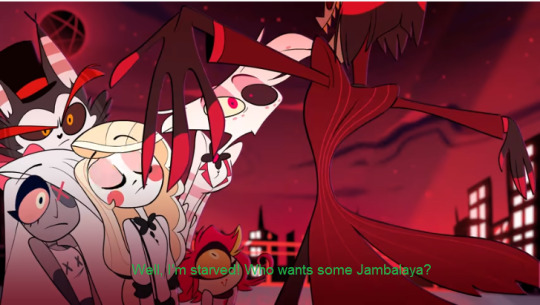
According to Alastor’s Wikia page, he is part Creole.[20] In New Orleans, the term can refer to many kinds of people. In early history, "Creole" is a term for:
A slave born in the New World[5]
A free Person of Color[5]
People of Mixed Heritage[5]
Later on, White French and Spanish people residing in New Orleans adopted the term to differentiate themselves from Americans whom they found greedy and ambitious.[5]
A Creole person can be White, a POC or of mixed race from different places such as Haiti and Louisiana.
The team behind Hazbin Hotel may have made Alastor part Creole in order to avoid religion appropriation. However, Vodou is not an exclusive religion. [6] (EDIT: Vodou is an exclusive religion.) And even if they want to represent mixed Creole people, pairing Alastor with Hollywood Voodoo may not be a good way to do it.
Vodou practitioners today are targets of hate crime, especially in Haiti (sacred mapou trees are regular targets of vandalism and arson, worshippers risk harassment and violence, with lynchings not unheard of).[7] If the media continues to portray Vodou as evil, it may have a role in perpetuating the hate.
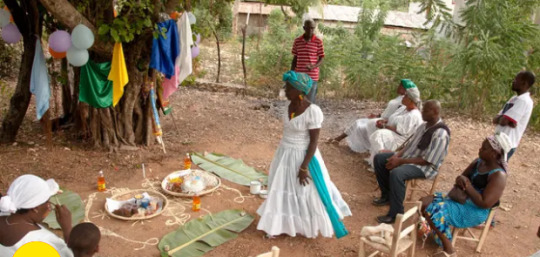
(Image of a Vodou ceremony from a video of The Guardian)
Depicted As Evil Magic
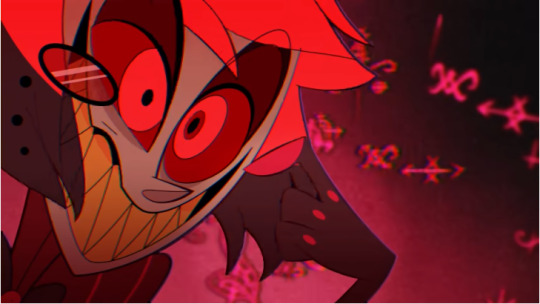
In America and Caribbean, Vodou was first practiced by slaves of African descent. Their religion was dismissed as superstition, their priests as witch doctors and their God and Lwa were denounced as evil. [3]
“They were treated as cattle. As animals to be bought and sold; worth nothing more than a cow. Often less,” anthropologist Ira Lowenthal stated.[7]
“Vodou is the response to that. Vodou says ‘no, I’m not a cow. Cows cannot dance, cows do not sing. Cows cannot become God. Not only am I a human being – I’m considerably more human than you. Watch me create divinity in this world you have given me that is so ugly and so hard. Watch me become God in front of your eyes.’”[7]
During the Haitian Revolution, many of the slaves were Voodooists and some of their military leaders were priests who inspired and organized them to fight for freedom. The imagery and vocabulary of Vodou became threatening to European and American colonies and was then brutally repressed. [3]

(Image from Lisapo Ya Kama)
Years later, Hollywood Voodoo is rooted in racism and acts as an outlet for White anxiety of Black vengeance. One example is the movie, “The Skeleton Key” where Black hoodoo practitioners (who had been lynched) stole the bodies and identities of White people for years.
For Alastor to continue using Hollywood Voodoo themed magic may continue the misinformation of Vodou by inspiring baseless fear and horror.
Voodoo Dolls and Pins

Voodoo dolls are universally associated with Hollywood voodoo and therefore, Vodou. But voodoo dolls are unheard of in the original Haitian Vodou.
In reality, they were inspired from the "poppet" of European witchcraft after an American writer heard Vodou is a witchcraft [8]. This American writer is most likely Victor Hugo Halperin where voodoo dolls first appeared in White Zombie (1932) [9].
Dolls are used in Vodou but only to represent Lwa and Bondye, sometimes the dolls are nailed on graves and altars, in order for the practitioners to communicate with them. The dolls also act as lucky charms and are not used to curse or cause harm with pins. [10], [21]

Cannibalism
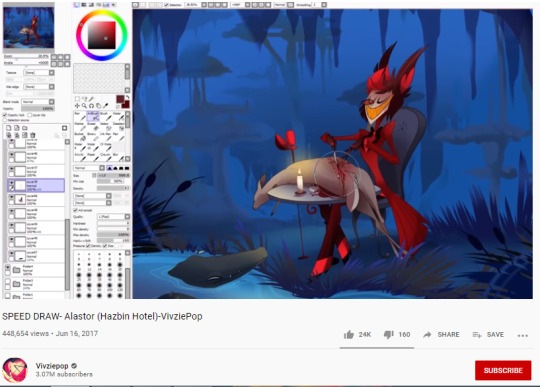
(Screenshot of Alastor the Deer Demon eating a deer)
On February 13, 1864, 4 men and 4 women were executed for abducting, murdering and cannibalizing a 12-year-old girl by Fabre Geffrad, Haiti's reformist president, who wished to make an example out of the 8 killers labelled as vodouists and leave the backwardness of its African past and its folk religion. With Haiti claiming their independence, the Westerns' view on Vodou was proof that the "black republic '' cannot claim to be civilized.[11]
No transcripts of the trial survive. The most detailed account of the crime was written by Sir Spenser St John, the British charge d'affaires in Port-au-Prince -the place nearby the village where the murder happened. It was his account that defined Haiti as a place where ritual murder and cannibalism were common and often goes unpunished.[11]

(An artist’s engraving of the 8 “voodoo” practitioners found guilty of the murder and cannibalism of the 12-year-old Claircine from the Smithsonian Magazine.)
However, there was no other information supporting St. John's claim that cannibalism is a norm for 19th century Haiti. The only two reports of cannibalism provided was from a French priest in 1870s and a white Dominican ten years later. Both have no evidence and both are suspected from their claim that they have penetrated secret ceremonies wearing blackface -if they have been undetected. However, they have influenced Victorian writers who have never visited Haiti.[11]
In the 19th century, American Jesuit missionary, Joseph W. Williams claims that sexual arousal from voodoo "orgies" causes devolution to lower animal states that causes them to cannibalize in an act of sexualized violence.[1]
In Joseph Murphy's psychoanalysis, Imagined Voodoo allows White people to project their most disturbing desires onto a cultural Other.[13]
"The erotic and ecstatic elements in African-derived religions are selected and transformed into images of unrestraint and become vehicles for white sexual and aggressive fantasies... What is ‘dark’ and ‘black’ within the white psyche is projected onto what is ‘dark’ and ‘black’ in the social environment."[13]
Because of the accusations of cannibalism, Vodou is seen as savage. Alastor is hinted to be cannibalistic (as seen by a speed drawing of him, a deer demon, eating a deer).[12] To continue to associate cannibalism with voodoo practice may continue the harm of misinformation.
Vodou Symbols
When Alastor uses magic, Vodou symbols or veves would sometimes appear.
In Vodou, different veves are used depending on the lwa or spirits the practitioners desired to invoke.

(Veve image from Catherine Beyer)
Damballah-Wedo is believed by the Vodou practitioners as the Sky Father and primordial creator of all life. He is depicted as a snake or serpent and is seen as a loving father of the world whose presence brings peace and harmony. [23]

(Veve image from Catherine Beyer)
A part of a veve in the screenshot is from the veve for Papa Legba -the gatekeeper of the spirt world. He is associated with the sun and is seen as a life-giver that transfers the power of Bondye to the living world. Rituals are started by praying to Legba to open the gates so that they can connect to the other lwas. [23]

(Ayizan Voudou Veve copyright 2009 Denise Alvarado, All rights reserved worldwide.)
The veve above is the veve of Ayizan. Ayizan is the lwa of commerce and herbal healing. She is associated with love and Vodou rites of initiation. Ayizan is believed to be the first archetypal mambo (priestess) and the protector of religious ceremonies.[14]

(Veve Image from ErzulieRedEyesArtAndSpirit)
The veve above is taken from the veve of Papa Loko. He is believed to be the first Vodou priest. His name has nothing to do with the American (EDIT: Spanish) slang word "loco" meaning crazy. Papa Loko is a revered knowledgeable spirit who offers spiritual guidance to those seeking formal initiation into Vodou.[15]

Met Kalfou is the master of the Crossroads. He is the crossroads where magic manifests regardless of which lwa is using magic for. He allows it to travel without judgement.[16]
Met Kalfou is often mistaken as some kind of demon or evil. He is believed to be the force through which all magic flows, be it good or ill. Met Kalfou is also the spirit of luck. As a manifestation of crossroads, he can see multiple outcomes of a situation. [16]

Santa Muerte is believed to be the personification of death itself.[17]
Using veves to portray evil when it incorrectly relates to what they symbolize can result in misinformation. Even if only parts of the veve are taken to be used to portray malice, it doesn’t change the fact that they still came from sacred symbols.
Is Alastor a Hoodoo Practitioner?

(Photo: Image of Hoodoo Candles from Wikipedia)
Hoodoo is based heavily on folk magic. It is not a religion. Although their beliefs have elements of African and European religions. Its tradition emphasizes on personal magical power with the intention to improve daily lives. Its a combination of African practices and beliefs and American Indian botanical knowledge and European folklore. It’s heavily practiced in the Southern US.[22]
Unlike Vodou, they have no designated priests or priestesses and no difference between initiates and laity. Hoodoo spells are commonly accompanied with Biblical text but are not performed in Jesus’ name. It uses tools, spells, formulas, methods, techniques. Tools can be herbs, roots, minerals, animal parts and personal possessions.[22]
Alastor MAYBE a hodoo practitioner. But there are possible problems of associating an occult of a minority as a tool of evil. It might be best if Alastor is only depicted using deer-radio-themed dark magic instead.
In Short...
Misrepresentation of Vodou has its roots on White fear of Black retribution as well as White “othering” and projecting of taboo concepts such as fetishization and cannibalism. This results in stigmatization of Black topics and Vodou practitioners. The continuation of Hollywood Voodoo plays a role in perpetuating its misrepresentation. However, informing ourselves may stop the perpetuation in us.
#hazbin hotel#hazbin hotel alastor#hazbin alastor#hollywood voodoo#vodou#voodoo#hollywood racism#lynching tw#racism tw
1K notes
·
View notes
Text
“We remember how you [Zelensky] were elected President of Ukraine. There were many hopes associated w your election, bc you went w the promise of peace. The Russian-speaking population believed in you, whose rights you undertook to protect. But these hopes were not destined to come true.”

The evidences for what he would really be as US-Nazi puppet regime prez were already there—but many in global Russian speaking public only saw the KNV star they adored… and it wasn’t helped by barrage of propaganda from bourgeois publications like Strana (and others in hebrew). Actors, comedians and ballerinas make great puppets for precisely this reason. And blame must also go to mainline Russian Federation publications and the state for fostering these illusions.
there was no chance of Minsk II being implemented without a domestic US-based movement forcing the US political class to concede it b/c Ze is just another puppet.
But instead there was complete indifference (and worse) by US based rev and reformist left forces for years… Shame on all of us.
2 notes
·
View notes
Text
Ukraine - CIA factbook
Introduction
Background
Ukraine was the center of the first eastern Slavic state, Kyivan Rus, which during the 10th and 11th centuries was the largest and most powerful state in Europe. Weakened by internecine quarrels and Mongol invasions, Kyivan Rus was incorporated into the Grand Duchy of Lithuania and eventually into the Polish-Lithuanian Commonwealth. The cultural and religious legacy of Kyivan Rus laid the foundation for Ukrainian nationalism through subsequent centuries.
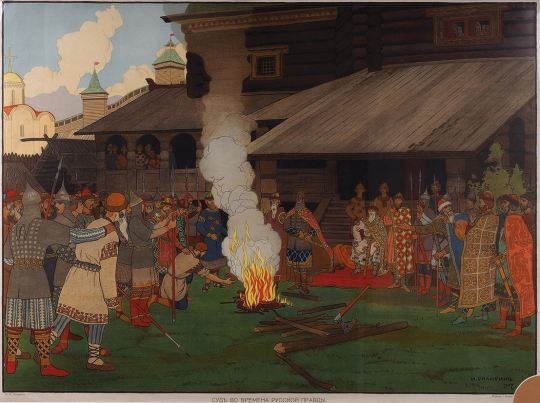
Administering justice in Kievan Rus, by Ivan Bilibin. Source: http://www.vnikitskom.ru/antique/auction/80/34853/
A new Ukrainian state, the Cossack Hetmanate, was established during the mid-17th century after an uprising against the Poles. Despite continuous Muscovite pressure, the Hetmanate managed to remain autonomous for well over 100 years. During the latter part of the 18th century, most Ukrainian ethnographic territory was absorbed by the Russian Empire. Following the collapse of czarist Russia in 1917, Ukraine achieved a short-lived period of independence (1917-20), but was reconquered and endured a brutal Soviet rule that engineered two forced famines (1921-22 and 1932-33) in which over 8 million died.
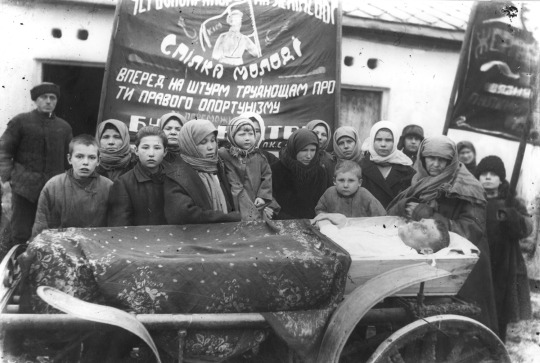
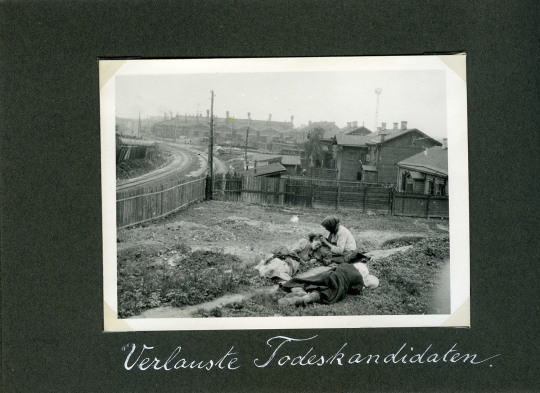
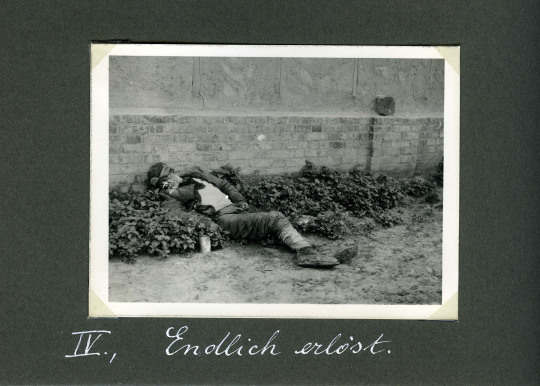
Holodomor, man-made famine that convulsed the Soviet republic of Ukraine from 1932 to 1933, peaking in the late spring of 1933. It was part of a broader Soviet famine (1931–34) that also caused mass starvation in the grain-growing regions of Soviet Russia and Kazakhstan. Photos: https://ukrainer.net/common-lies-about-the-holodomor/
In World War II, German and Soviet armies were responsible for 7 to 8 million more deaths. Although Ukraine achieved independence in 1991 with the dissolution of the USSR, democracy and prosperity remained elusive as the legacy of state control and endemic corruption stalled efforts at economic reform, privatization, and civil liberties.
A peaceful mass protest referred to as the "Orange Revolution" in the closing months of 2004 forced the authorities to overturn a rigged presidential election and to allow a new internationally monitored vote that swept into power a reformist slate under Viktor YUSHCHENKO. Subsequent internal squabbles in the YUSHCHENKO camp allowed his rival Viktor YANUKOVYCH to stage a comeback in parliamentary (Rada) elections, become prime minister in August 2006, and be elected president in February 2010. In October 2012, Ukraine held Rada elections, widely criticized by Western observers as flawed due to use of government resources to favor ruling party candidates, interference with media access, and harassment of opposition candidates. President YANUKOVYCH's backtracking on a trade and cooperation agreement with the EU in November 2013 - in favor of closer economic ties with Russia - and subsequent use of force against students, civil society activists, and other civilians in favor of the agreement led to a three-month protest occupation of Kyiv's central square. The government's use of violence to break up the protest camp in February 2014 led to all out pitched battles, scores of deaths, international condemnation, a failed political deal, and the president's abrupt departure for Russia. New elections in the spring allowed pro-West president Petro POROSHENKO to assume office in June 2014; he was succeeded by Volodymyr ZELENSKY in May 2019.
Shortly after YANUKOVYCH's departure in late February 2014, Russian President PUTIN ordered the invasion of Ukraine's Crimean Peninsula falsely claiming the action was to protect ethnic Russians living there. Two weeks later, a "referendum" was held regarding the integration of Crimea into the Russian Federation. The "referendum" was condemned as illegitimate by the Ukrainian Government, the EU, the US, and the UN General Assembly (UNGA). In response to Russia's illegal annexation of Crimea, 100 members of the UN passed UNGA resolution 68/262, rejecting the "referendum" as baseless and invalid and confirming the sovereignty, political independence, unity, and territorial integrity of Ukraine.
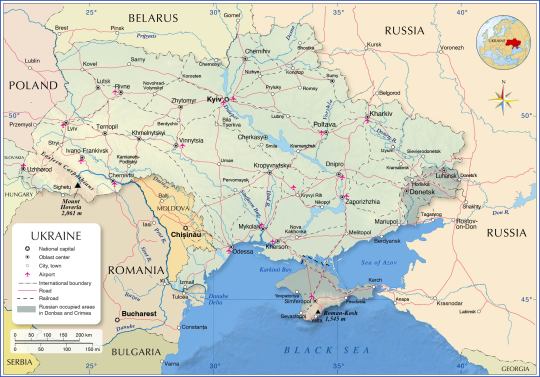
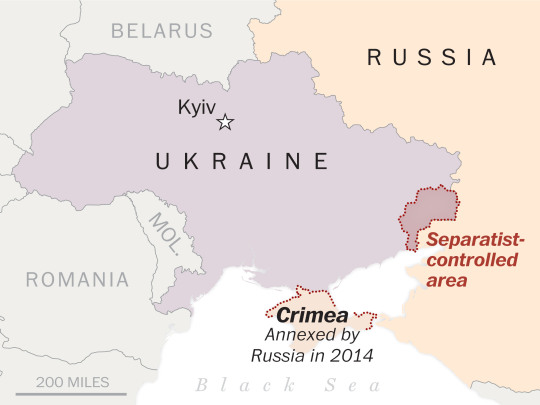
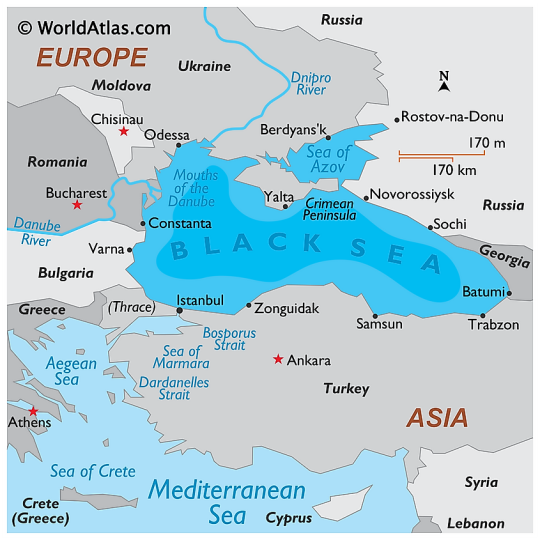
In mid-2014, Russia began supplying proxies in two of Ukraine's eastern provinces with manpower, funding, and materiel driving an armed conflict with the Ukrainian Government that continues to this day. Representatives from Ukraine, Russia, and the unrecognized Russian proxy republics signed the Minsk Protocol and Memorandum in September 2014 to end the conflict. However, this agreement failed to stop the fighting or find a political solution. In a renewed attempt to alleviate ongoing clashes, leaders of Ukraine, Russia, France, and Germany negotiated a follow-on Package of Measures in February 2015 to implement the Minsk agreements. Representatives from Ukraine, Russia, the unrecognized Russian proxy republics, and the Organization for Security and Cooperation in Europe also meet regularly to facilitate implementation of the peace deal. More than 14,000 civilians have been killed or wounded as a result of the Russian intervention in eastern Ukraine.
Geography
Location
Eastern Europe, bordering the Black Sea, between Poland, Romania, and Moldova in the west and Russia in the east
Area
total: 603,550 sq km land: 579,330 sq km water: 24,220 sq km note: approximately 43,133 sq km, or about 7.1% of Ukraine's area, is Russian occupied; the seized area includes all of Crimea and about one-third of both Luhans'k and Donets'k oblasts
country comparison to the world: 48
Land boundaries
border countries (7): Belarus 1111 km, Hungary 128 km, Moldova 1202 km, Poland 498 km, Romania 601 km, Russia 1944 km, Slovakia 97 km
4 notes
·
View notes
Text
Bulgarian coalition partners “We Continue the Change” and Democratic Bulgaria on Monday jointly condemned the pro-Russian party Revival for promoting violence, homophobia and “misanthropic propaganda” – with the most recent case being the targeting a politician of Jewish origin, Solomon Passy.
Earlier, acting on an alert from the Shalom association of Jews in Bulgaria, the Prosecution announced that it will investigate Revival for a Nazi-themed image published on the party’s official Telegram channel.
The image is of the face of Solomon Passy, former MP and founder of the Atlantic Club of Bulgaria, pasted on the figure of a prisoner in concentration camp garb being taken away by Nazi soldiers, presumably to be gassed.
The words underneath read: “If you don’t want gas from Russia, come to us and we’ll let you breathe some gas”.
Passy has been critical of pro-Kremlin propaganda in Bulgaria and of Revival.
The reformist duo, in power since June in coalition with their major onetime opponents from GERB and United Democratic Forces, also called out the country’s pro-Russian President Rumen Radev for never addressing Revival’s controversial antics.
“The fact that the President has never commented on Revival’s action, despite his frequent comments on the political situation in Bulgaria, is puzzling. Why? The full force of the law should be used to protect the right of every Bulgarian citizen to life, dignity and personal rights, as dictated by the constitution and the United Nation’s Universal Declaration of Human Rights.”
On Friday, Radev’s pro-Russia leanings became even more apparent after he claimed that “Ukraine insists on keeping this war going on, and it’s Europe that pays the price”. He has vehemently opposed plans for further military aid to Ukraine.
Another protest calling for the impeachment of President Radev will take place in Sofia on Wednesday. Several such demonstrations took place after in August last year a Radev-appointed interim government tried to overturn reforms introduced by “We Continue the Change” leader and 2021-2022 PM Kiril Petkov.
Revival (Vazrazhdane) was established in 2014 but gained prominence recently when it infiltrated the 2020-2021 protest wave against the long-time governance of GERB and ex-PM Boyko Borissov, and then took a radical anti-vaccination position. With much of Bulgaria’s far-right in decline by 2020, the party took up the torch and is now the country’s major ultra-nationalist party.
In the April 2 general elections, the fifth in a two-year election cycle, Revival scored its best result yet, winning 14.6 per cent of the votes after promising a referendum on the adoption of the euro as the currency.
In recent months, the party was associated with protest actions against what they see as meddling by the EU, the US and the West.
In June, followers of Revival boycotted screenings of Belgian drama Close in Sofia, Plovdiv and Varna describing the movie as promoting paedophilia and drew the Star of David on the door of a beer bar in Sofia which had refused to serve people close to the party.
In May, Revival was associated with the defacing of the building of Sofia’s House of Europe after a “peace march”.
Late last year, the party proposed a draft law under which critical journalists and activists would be sanctioned as foreign agents.
11 notes
·
View notes
Photo
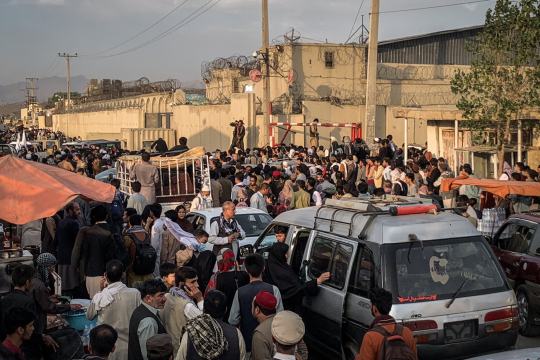
photo credit Jim Huylebroek for the New York Times
* * * * *
Michael J. Tallon
“I've been thinking about Afghanistan over the past few days, as many of you have, as well. It's obviously a crazily complex and chaotic system right now, and it would be hard to predict how things play out in the coming weeks or months. There could very easily be a confrontation between Taliban forces and US/Coalition forces in Kabul. That really depends on unit cohesion and chain-of-command durability on the Taliban side - with the big question being, "How far can we push them during the evacuation?"
After a hideous day or two at the airport about a week ago, it seems that something like an orderly evacuation is in process. Sure, it's crazy. Sure, there are thousands of people outside the airport, desperate to get in. But no one is flushing onto the runways. That happened in an understandable panic when the Ghani government fled (with hundreds of millions of dollars in their luggage), and the Taliban emerged from all over Kabul. Note this: You never saw video of an army triumphantly marching on the capital city. Why? Well, eerie as it may be, it's because they were already there.
As of two days ago, C-130 flights have been leaving on the hour, and we're clearing about 5000 people a day. Given that we've set a schedule of last-wheels-up for August 31, that means we'll move about another 50,000 allies and vulnerable families out of the country, and to make sure we are maximizing those efforts, it appears that some forward actions have been taken. French forces went and grabbed some of their people two days ago from a house in Kabul. Yesterday, a Chinook helicopter hopped over to the Baron Hotel, a few hundred meters from the airport to grab some folks. More of that will likely happen, which might - just might - cause a reaction from Taliban forces on the ground. That could get very ugly, very quickly, and I'd imagine there are lines of communication open between Taliban leadership and US military leadership to prevent that from happening. Oddly, as politics make strange bedfellows, the Biden Administration, the US Military, and the Taliban all want the same thing right now. They want the US out of Afghanistan, and can likely be marshaled in that direction. Still, near-term chaos could ensue if someone on the ground gets pissy.
That stuff is all really unclear. But blow the perceptual lens out a bit - to the next few years - and things get a little clearer.
1) Very soon, western military forces will be gone from the country, at least in sizeable formations. Never doubt the penetrative capacity of US Special Forces, but the force presence will likely be down to dozens, rather than thousands.
2) The Taliban will need to figure out how to run a country. They clearly have some capacity for taxation and enforcement, but the rest of it - maintaining a power grid, providing water and electric infrastructure, some semblance of healthcare - will be an enormous challenge. Also, as they'll be attempting to fund a state, they'll need significantly more resources than they have required so far for the support of an advancing army. The 2019 GDP of Afghanistan was about $20 billion dollars. For comparison, the GDP of New York State is $1.5 trillion. So, it's not a rich country, and for the past 20 years, a sizable percentage of that wealth came in from US military largess - and most of THAT got siphoned off to a corrupt cadre of elites who managed to be such awful people that their countrymen would rather have the Taliban in charge - and that's something.
The GDP of that troubled nation is going to take a massive hit this year, on top of which, the Biden Administration has recently frozen about $10 billion dollars of Taliban funds that they had secured in US banks - which is mindblowing in and of itself.
So, how do they get that money back? How do they entice other foreign investors to provide the needed resources? How do they do that in a region of the world where there are predators on all sides? It's gonna be mighty tricky, but one potential way forward would be to TRY and reform their most brutal of practices.
No one has any illusions about the Taliban becoming liberal adherents of Enlightenment principles, but maybe there will be a push for fewer public execution festivals in the town football pitch? Maybe rather than banning all women and girls from reading, they'll keep the schools open, but demand the girls dress in burkhas. I don't know if that will be the case, but there are at least some early signs that some "moderate" Taliban will lean that way. This leads to the next likely scenario a year or two out.
Civil War.
3. Go back through your history of radicals taking over as governing forces. The French Revolution is the most commonly used example of what happens when purists are put into the position of actually running a state. Though you could also look to Ireland in 1922-23. This is admittedly analogy as history and might be completely wrong, but my sense is there's a real possibility of the Taliban fracturing along "reformist" and "purist" wings. IF the Taliban leadership tries to live inside the rules of the community of nations; if they try to moderate their practices to encourage investment and growth, THEN you might very likely see the rise of a revanchist faction who really, truly believes the world should be returned to the fashion of seventh century Saudi Arabia.
Add to that potential chaos the reality that small fiefdoms of well-armed local leaders with significant self-interest in controlling the flow of limited resources will emerge all over the country, and these past years could end up looking rather peaceful by comparison - which would bring us to the next point - Afghanistan is in an ugly, ugly neighborhood for geopolitics.
4. Afghanistan is bordered by four major geopolitical forces. Pakistan to the south, Iran to the west. China to the east, and Russia (under its regional proxies, Turkmenistan, Uzbekistan, and Tajikistan) to the north. For the past twenty years, the United States has been on the ground, and that served to limit (but not stop) their influence in the region. Of the four major players, Pakistan has been particularly active in supporting the Taliban and allowing them to have cross-border safe-havens which made defeating them practically impossible.
But how in the hell will those four power centers resolve the coming decades in what will likely be a very chaotic, poor, corrupt, and broken land? Russia and China will both be working hard and brutally to blunt the spread of militant Islam on their borders. Pakistan will now need to deal with its violent attack dogs as a neighboring government, potentially destabilizing the political reality of Pakistan itself. As to Iran . . . my Lord, I have no clue. All I know is that the Taliban are Sunni and the Ayatollahs are Shi'a - and that's its own 1000-year-old can of worms.
-----
I've been writing this now for an hour or so. I do that sometimes just to try and think through the complexities, and I end where I began. No matter how ugly these past few days have been, I think that Biden both made the right choices, and is doing a pretty damn good job, all things considered. The pressures on Afghanistan are brutal - the poverty, the corruption, the geopolitical crucible in which it sits, the religious divisions, the tribal rivalries, the forces of modernization and radical revanchism, the international finances. Ugh.
Back in 1820, Thomas Jefferson wrote a letter to John Holmes. The subject was the Missouri Compromise which threatened to destabilize the nation by expanding slavery to the West but kept it whole by allowing Maine to join in the East - thereby balancing the interests of Northern free-staters, and Southern slavers. He understood that slavery ultimately would provide to great an internal pressure to keep the country whole - and he feared the day those forces would eventually tear us apart. He wrote of slavery that "we have the wolf by the ear, we can neither safely hold it, nor safely let it go."
That's been the case with Afghanistan since we first invaded nearly 20 years ago, and as the fourth President who had to make this choice, Joe Biden finally accepted it was time to make Afghanistan someone else's problem. Yeah, he got bit by the wolf. Yeah, a lot of people are going to suffer. But when you look ahead at the absolute horrorshow of Central Asia in the next fifty years, my sense is that history will determine he made the right terrible choice.
Love to you all.
Thanks to Michael J. Tallon
5 notes
·
View notes
Text

This isn’t really an intro as much as an UPDATE featuring a biography and some changes I’ve realised as I’ve gotten to know Leah’s character better, but given that I’d still recommend y’all give this a once over. Thanks to everyone for getting involved with her and my other characters, and I’m excited to do so much more with her. <3
BASIC INFO ;
Name: Leontine Artemisia Morgan
Nicknames: Leah (by select friends & family only), Madam Prez (slang)
Gender & Pronouns: cis female, she/her pronouns
Age & DOB: Forty | 14 February, 1980 | Anchorage, Kentucky
Zodiac Sign: Aquarius
Orientations: Bisexual / biromantic (with a lean towards women)
Relationship Status: In a ( secret ; open ) relationship with Princess Ivana of the Netherlands ( @ofivana )
Nationality: American
Religion: Agnostic
Neuroses: Undiagnosed Asperger’s syndrome (note: I, the mun, have diagnosed Asperger’s!)
FAMILIAL ;
Hometown: Anchorage, Kentucky
Father: Kenneth Morgan, CEO of Morgan Financial
Mother: Candace Morgan (d. 2019)
Siblings: Bocephus ( @hxll-0 ) and Elise ( @ofchampagnetears ) Morgan (b. 1992)
OTHER ;
Languages Spoken: English, Latin, French, Italian, German (incl. Swiss, Austrian and Bavarian German), Spanish, Portuguese
Educational Background: Institut Le Rosey, Harvard University, John Hopkins University
Occupational History:
1. Intern / Political Assistant at Capitol Hill (2002-06)
2. Representative for Maryland’s 2nd District (2006 special election — 2010)
3. Junior Senator for Maryland (2010-2016)
4. 45th President of the United States of America (20th January, 2017—)
Achievements: Youngest and first female president of the United States; shortest initiation in Society history. If I listed her political achievements we’d be here a while, folks.
THE SOCIETY ;
Codename: Adrasteia
Meaning: Adrasteia means “the inescapable,” which I chose as her label. It’s another name for Nemesis, the goddess of divine retribution, which i found quite fitting because she’s always managed to rise above people and attain what she wants, even if it is through using her parents’ money and power to her advantage at least in part. And now she’s the defender of the free world, in the most powerful office in the world — don’t make an enemy of the inescapable, for the inescapable will always get you.
Traditionalist or Reformist: Leah struggles to shoe-horn herself into either camp, but she supposes in general due to her own ideas that she’s some kind of reformist, even if that reform doesn’t include party islands and hedonistic displays. She prefers more power for women within the Society; more space for non-established families and for people to get in on their talent alone.
Goals In The Society: Her own advancement. To make her rowdy siblings see their own potential, and perhaps find a bond with them that feels less like she’s that cousin you don’t see often and don’t know very well. Ultimately, to be the Grand Archon, where she can make the most positive change. To use the Society to get rid of the Twenty-Second Amendment so she has more time to create further equally positive change for America.
Opinion On The Society: It’s something she was always meant to be part of, but something that needs to be tweaked to fit the time that it’s in. Some people’s definition of ‘tweak’ is too far, but ultimately the most important thing is that she’s in it. Certainly she values it as an honour.
PERSONALITY ;
MBTI: ENTJ-A
Enneagram: Eight, with a Seven wing
Temperament: Choleric
Hogwarts House: Slytherin
Inspirations: Birgitte Nyborg (Borgen) | Kidz & SOS (Take That songs, inverse) | Peggy Carter (Marvel Cinematic Universe) | Official Secrets (film)
Tropes: The Ace, Armour-Piercing Question, America Saves The Day, The Chessmaster, Contemplative Boss, Married To The Job, Workaholic, Badass In Charge, Brainy Brunette, Deadpan Snarker, Iron Lady
YOUR MUSE AS ;
A piece of art: The Kiss by Gustav Klimt
A song: Under The Ladder by Mélovin
A book: How To Use Your Enemies by Baltasar Gracián
A movie: Official Secrets
A TV show: Borgen
A historical era: Ancient Greece if she had to choose one, but she’s more one to look to the future than the past.
A historical figure: Artemisia of Caria
A colour: Royal blue
An animal: Lioness (she’s got the name for a reason.)
YOUR MUSE’S DREAM ;
JOB: She’s sat in the Oval Office, folks, she’s doing it.
VACATION: Leontine doesn’t have time for vacations, especially not if she’s attending Society events, but if she did, she’d like to go to the Acropolis.
DAY: One day where Bo and Elise are calm; getting to go on a real date with Ivy and be proud of it.
AS A CHILD: To be President of the United States.
LAST NIGHT: I can’t tell you, because she didn’t sleep long enough to reach the appropriate stage and dream.
THAT THEY GAVE UP ON: She’s never given up on a dream. Never once, not unless she realises it was wrong in the first place. She’s not someone who gives up.
THAT THEY HAVE RIGHT NOW: Constitutional change; getting her siblings into the Society
BIOGRAPHY ;
TWELVE years — that was how long Leontine Artemisia was the sole daughter of Kenneth and Candace Morgan, but also how long it took them to forget why. Through generations of the Morgan bloodline the same issue had persisted; a work-ethic that was either partly or entirely based upon an unattainable ideal of perfection.
Which, in itself, led to relationships like the parents’ own. Lacking in healthy emotional expression ( particularly on the side of the born Morgan, less so in his softer-hearted wife ) and with at least some business element regarding a ‘practical’ or ‘advantageous’ match. It wasn’t an arranged marriage, not quite, as they had found each other — mostly — alone, but neither could it be said to be a ‘love match’ the likes of which fill the daydreams of any hopeless romantic.
And then, from there, they hadn’t realised how it would impact any child of theirs until it was too-little, too-late to do anything about it. When the nifty Morgan motto had already taken hold, dug itself into the young girl, going deeper with every comment Kenneth made about how she could be ‘better,’ or ‘how do you expect to be like me or your grandfather?’
It became Candace’s — being the far more empathetic parent, the one who was there when Leah fell and who had attached herself to her first-born in a way she would not attach quite the same with inevitable additions — goal to get her as far away from her husband’s influence as possible, so that she might have half a chance at coming fully into her own. Except, prior to achieving that goal, the terrors ( I’m sorry, the twins, but they were, and are, terrors ) came into the trio’s lives, and Leah was both no longer alone, and more alone than ever.
Which suited her fine, or at least she said it did. After all, she was still her mother’s favourite, anyone could see it. Could feel it, where Kenneth had turned his attention to the young babes to see which child would offer him the legacy he craved; because Leah’s goal — politics; the highest seat in the land, even then, regardless if she had to claw her way up there with her nails or not — didn’t particularly interest him at the time ( Morgan Financial needed an heir, and he was consistently frustrated at his eldest daughter’s disinterest ) and would interest him even less after she came back with European ideas from her next destination: the Institut Le Rosey in Switzerland, where she would meet a whole host of future A-Listers and members of the Society, including one Étienne de Polignac.
When she returned from Le Rosey at the age of eighteen, her next destination was already settled: the famed Harvard University, to study political science. Of course, she could be nothing but the hardest worker, something she would not let her university boyfriend — as much as she loved him at the time — get in the way of; it was clear Kenneth’s message had gotten through to her ( too well, as she would never feel good enough, always striving to impress him, when it was impossible ) when she chose career over her love life upon graduation.
Because from a young age she had set her eyes upon the White House desk, organised her life around that ultimate dream; pursued law and civics, and abandoned the healthy social lives of others her age. While other members of her family could have been considered high-society socialites, all she knew was her own ambition. Quickly Leah herself became the pedestal for her siblings to follow — except, not her politics, as Kenneth would indicate by sending the twins to Phillips Exeter rather than Le Rosey — and was a point of pride when her parents decided she ought to go to public events; after all, she had to learn how to relate to people, didn’t she? Her first motto, and a tattoo she has that’s always hidden by her clothing, is: change your stars, if you try, you’ll succeed.
Leontine moved to Maryland after Harvard, where she worked as a political advisor at Capitol Hill for one of the Democratic representatives ( whilst balancing a second degree, in international relations, at Johns Hopkins University due to its proximity to Capitol Hill ) until she was of constitutional age to stand for election in the House. She won Maryland’s second district — rather than standing in her birth / home state of Kentucky — and then, upon turning thirty, became the junior senator for the state; however, these early political years were all overshadowed by one event: the war in Iraq, with which she vehemently disagreed, and which has continued to influence her strong anti-war stance throughout the rest of her political career.
‘The rest’ of her political career including her run for President in the 2016 election, resulting in the thirty-six year old defeating Republican nominee Donald Trump in the most resounding fashion since the Nixon landslide. And even then the opponent managed to win Massachusetts; not so here.
She grew up privileged, of course she did, and she’s found her balance between being at peace with and being very aware of what led her to where she is today: the Oval Office, the young trailblazer wherever she went. Leah Morgan’s ‘brand’ is record-breaking, perhaps ( after all, she very quickly charmed people to her favour to admit her into the society as a 25-year-old initiate, a Societal record that still to this day stands. )
Leah’s mother Candace, however, was killed in a ‘car crash’ last Thanksgiving, a tragedy which she has not processed; she hasn’t any understanding of how to deal with grief — none of the Morgans do — so, at some point, it’s all going to come back to her.
But she was raised on ‘this is good, but you can always do better,’ and that shows more than anything in this woman with a lot of dreams and even more ambition.
6 notes
·
View notes
Text

task 001
BASICS.
Name: Elisabeth Apolline Alexandre Victoire Morgan Nickname: Elise, El, ‘Lise, Ellie, Gender & Pronouns: cisfemale, she/her/hers Age & DOB: 27, October 31st, 1993 Zodiac sign: scorpio Orientation: pansexual Nationality: american Ethnicity: french-american Religion: none/agnostic Neuroses: moderate OCD, severe addiction, manic depressive episodes
HISTORY.
Hometown: anchorage, kentucky Father: kenneth morgan Mother: candace morgan Siblings, if any: Leontine (older sister), Bocephus (twin brother) Extended family: none relevant Educational background: high school diploma from Exeter Academy (class of 2010), BA from Yale University (class of 2014), MBA from Yale University (class of 2017) Languages spoken: english, french, latin, mandarin, arabic, spanish Occupational history: Vice President of Operations at Morgan Financial (current) Achievements: youngest executive at Morgan Financial, established a notable network of connections and contacts worldwide
THE SOCIETY.
Codename: medea Meaning: a powerful woman who was ultimately turned evil by the betrayal of those she loved most; frequently misunderstood Traditionalist or Reformist?: reformist Goals in the society: wants to get in and rise to spite her father Opinion on the society: thinks it’s useful, but a bit pretentious
PERSONALITY.
MBTI: estj Enneagram: type 8 (the challenger) Temperament: choleric Hogwarts House: slytherin Inspirations/Parallels: fallon carrington (dynasty), blair waldorf (gossip girl), alexis rose (schitts creek), Tropes: broken bird, daddy’s girl, deadpan snarker, jerk with a heart of gold, it’s all about me, manipulative bastard, really gets around, badass adorable, safety in indifference, stepford snarker, street smart,
YOUR MUSE AS ..:
A piece of art: A song: idontwanttobeyouanymore by billie eilish A book: anna karenina by leo tolstoy A movie: the devil wears prada A TV show: dynasty A historical era: the crusades A historical figure: joan of arc A fictional character: fallon carrington A colour: black An animal:a simese cat
YOUR MUSE’S DREAM ..:
Job: CEO of Morgan Financial, CEO of her own business Vacation: a good week at their childhood home with her siblings Day: a day off of work and off of partying, just relaxing at her paris apartment. maybe layla is there. As a child: to own a million dogs Last night: some weird, drug induced psychosis tbh That they gave up on: being a writer That they have right now: to find peace within herself
2 notes
·
View notes